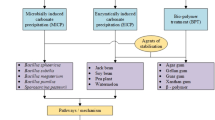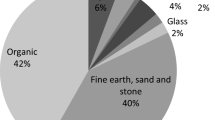Abstract
A comparative assessment of different sawblade designs was undertaken to establish their relative potential in conversion of abrasive, silicious hardwoods. The feed speeds of an originally shaped fully modified sawblade tooth profile (E) were compared to those produced by the conventional (C) and improved, i. e. partly modified (M) sawtooth design, in highly abrasive Lophostemon confertus. The (E) profile sawblades have shown an improvement over (C) and (M) saws of respectively 7 m/min and 10 m/min, achieving average feed speeds in the range of 40–45 m/min, which are of the same order or superior to those obtained by conventional sawblades in the conversion of softwoods. If the new (E) profile saws are used in the processing of conifers, further increases in feed speeds may be expected.
Zusammenfassung
Versuchsreihen zur vergleichenden Prüfung unterschiedlicher Sägezahnformen wurden durchgeführt mit dem Ziel, deren Leistungsfähigkeit beim Schneiden silikathaltiger Laubhölzer festzustellen. Verglichen wurden ein vollständig modifiziertes sägezahnprofil (E) mit einem konventionellen Profil (C) und einem teilweise verbesserten Sägenzahnprofil (M) hínsichtlich der möglichen Vorschubgeschwíndigkeiten beim Schnitt des hochgradig silikathaltigen Holzes von Lophostemon confertus. Die Sägeblätter mit dem Profil (E) zeigten Verbesserungen gegenüber Profil (C) von 7 m/mi und gegenüber Profil (M) von 10 m/min, durch Erreichen mittlerer Vorschubgeschwindigkeiten von 40–45 m/min, die etwa in der gleichen Gröhnlich beim Einschnitt von Nadelhölzern erreicht. Sofern das neu entwickelte Sägezahnprofil (E) and für den Einschnitt von Nadelhölzern eingesetzt werden sollte, müßten sích auch dort höhere Vorschubgeschwindigkeiten erzielen lassen.
Similar content being viewed by others
Literatur
Antoine, R. C. 1960: Le sciage des bois tropicaux. Bois et Forêts des Tropiques No. 74:35–49
Bootle, K. R. 1971: The commercial timbers of New South Wales and their uses. Sydney: Angus & Robertson.
Krilov, A. 1975: Mechanics of thermal high-frequency hardening of bandmill sawblades. Univ. of Sydney: M. Eng. Sci. Thesis
Krilov, A. 1976: Effect of thermal high-frequency surface hardening on the hardness and microstructure of bandsaw teeth. Wood Sci. Technol. 10:199–208
Krilov, A. 1977: Einfluß einer Wärmebehandlung auf den Zustand und die kristalline Feinstruktur von Bandsägeblättern. Holzindustrie 30:172–173
Krilov, A. 1978a: Design criteria for bandmill sawblades in conversion of Australian hardwoods. Univ. of Sydney: Ph. D. Thesis
Krilov, A. 1978b. [Thermal high-frequency hardening of sawblade teeth] Drv. Ind. 29:169–171
Krilov, A. 1980: Toward the re-appraisal of the influence of basic wood characteristics on sawblade potential. Holz Roh- Werkstoff 38:145–149
Krilov, A. 1985: Sawblade design: theory and practical application— Experiments, practical application, results. Holz Roh-Werkstoff 43:351–353
Author information
Authors and Affiliations
Rights and permissions
About this article
Cite this article
Krilov, A. Feed speeds in cutting silicious hardwoods by bandsaw. Holz als Roh-und Werkstoff 43, 381–384 (1985). https://doi.org/10.1007/BF02607912
Issue Date:
DOI: https://doi.org/10.1007/BF02607912




